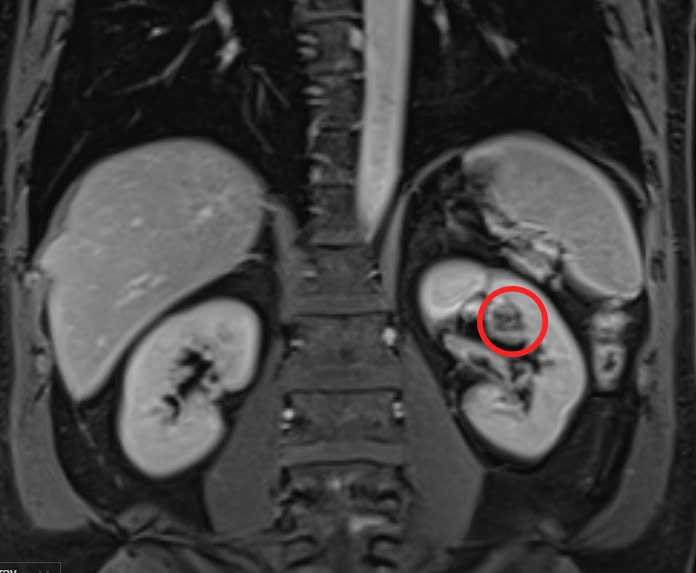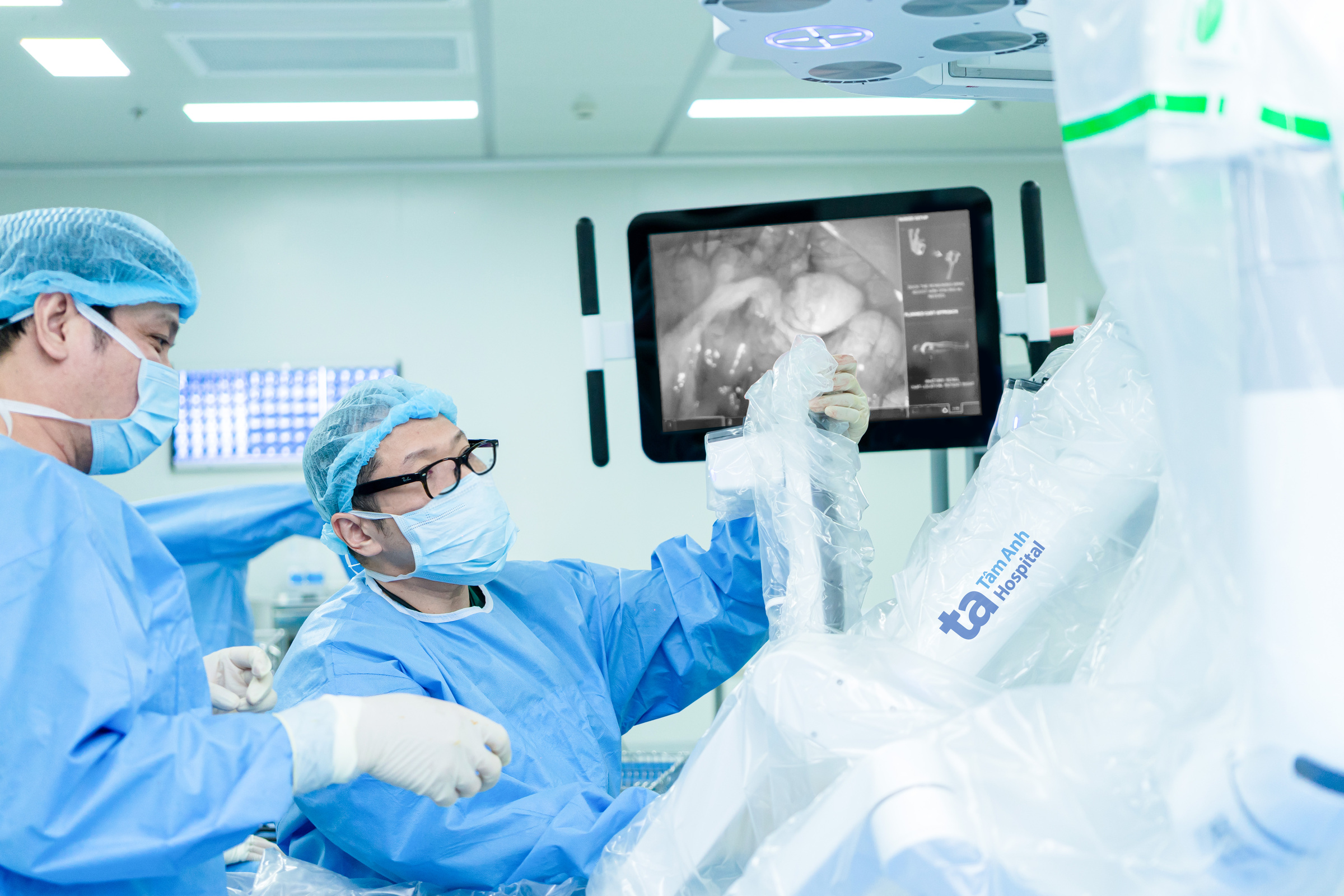Dr. Nguyen Hoang Duc, Head of the Urology Department at the Urology - Nephrology - Andrology Center of Tam Anh General Hospital in Ho Chi Minh City, explained that Mr. Long's 12 mm tumor was located in the renal hilum, a critical area where arteries and veins enter and exit the kidney. This area also houses vital structures like the renal pelvis and ureter. Due to the high risk of bleeding, a biopsy was not possible. CT and MRI scans were conducted, suggesting renal cell carcinoma.
 |
The cancerous kidney tumor located within the renal hilum, where major blood vessels pass. Photo: *Tam Anh General Hospital* |
The tumor posed a risk of spreading to lymph nodes in the renal hilum or surrounding lymphatic system, and even early metastasis through the bloodstream. Traditional surgery carried a high risk of requiring a full nephrectomy due to the difficulty in controlling bleeding during the procedure.
To enhance precision and control over blood vessels, doctors opted for robotic surgery using the Da Vinci Xi system. The robot's four arms were used to carefully dissect the renal hilum, clearly exposing the renal artery, vein, pelvis, and ureter. The 3D magnified images and the robot's 540-degree rotation capability allowed the surgeon to navigate the confined space, maneuvering around the blood vessels to precisely remove the tumor with minimal bleeding and preserving healthy kidney tissue. Post-surgical histology confirmed the initial diagnosis of cancer.
Mr. Long recovered quickly, his health stabilized, and he was discharged early. He will undergo follow-up examinations every 3-6 months with imaging (CT, ultrasound) and kidney function tests to monitor for recurrence. Doctors recommended a healthy lifestyle, including a low-sodium diet, reduced animal protein intake, no smoking, blood pressure control, and limited exposure to harmful chemicals.
 |
Dr. Duc (front) connects the robotic arms to the trocars, instruments that allow access to the surgical site. Photo: *Tam Anh General Hospital* |
Renal cell carcinoma is the most common type of kidney cancer in adults, accounting for 85% of cases. In its early stages, the disease often presents no noticeable symptoms and is typically diagnosed through CT or MRI scans, occasionally with a kidney biopsy. As the disease progresses, symptoms such as blood in the urine, flank pain, unexplained fever, and a palpable mass may appear.
According to Dr. Duc, surgery is the primary treatment for most kidney cancers, including open surgery, traditional laparoscopic surgery, and robot-assisted laparoscopic surgery. Depending on the tumor's size and location, a full or partial nephrectomy is performed, aiming to preserve as much kidney function as possible. Early diagnosis and treatment can lead to a 5-year survival rate of approximately 90%.
Ha Thanh
| At 8 PM on 23/9, Tam Anh General Hospital in Ho Chi Minh City will host an online consultation: "The new generation Da Vinci Xi Robot: A revolution in the treatment of prostate, kidney, and bladder cancer, and other urological diseases". It will be broadcast on the VnExpress fanpage. Participating doctors from the Urology - Nephrology - Andrology Center include: Associate Professor Vu Le Chuyen - Director of the Center, Dr. Nguyen Hoang Duc - Head of the Urology Department, Dr. Nguyen Tan Cuong - Deputy Head of the Urology Department and Head of the Urological Oncology Unit, and Dr. Le Phuc Lien - Head of the Female Urology Unit. Readers can submit their questions here. |












